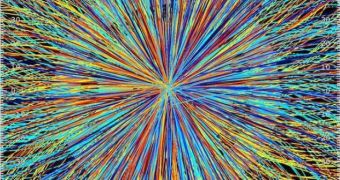At a conference being held in Grenoble, France, experts presented a set of papers which appear to indicate that an announcement on the discovery of the Higgs boson is imminent. There is however no way to tell for sure, so only time will tell, analysts believe.
The optimism sweeping through scientists comes from the Large Hadron Collider (LHC), massive particle accelerator the European organization for Nuclear Research (CERN) operates underneath the French-Swiss border, near Geneva.
Three main experiments and numerous secondary ones are installed in the facility’s 27-kilometere-long tunnels, and all of them collect readings as either protons or heavy lead nuclei are being slammed against each other from opposite directions at high energy levels.
The LHC is capable of accelerating each of its two beams to 7 teraelectronvolts (TeV), for a total output of 14 TeV. Theoretically, this should put its operations well within the range proposed for the Higgs boson by the Standard Model of Particle Physics.
Over the past few months, collisions conducted in this facility have resulted in several blips, anomalies in the data that researchers cannot really explain. Some of these weird information may hold clues to the existence of the Higgs boson, researchers say.
Two new papers on these odd spikes were presented at the International Europhysics Conference on High-Energy Physics. Their results, combined with a memo that leaked from CERN in April, got people excited that an announcement on the discovery of the Higgs is forthcoming.
The Standard Model proposes a mass between 114 and 185 gigaelectronvolts (GeV) for the Higgs. The two new papers – each from a different experiment – show spikes in this energy range, though different scientific instruments were used, Space reports.
“Discovery or exclusion of the Higgs particle, as predicted by the Standard Model, is getting ever closer,” a statement from the CERN Director for Research and Scientific Computing, Sergio Bertolucci, says.
“Both occurrences will be great news for physics, the former allowing us to start the detailed study of the Higgs particle, the latter being the first proof of the incompleteness of the Standard Model, requiring new phenomena to be happening within the reach of the LHC,” he adds.

 14 DAY TRIAL //
14 DAY TRIAL //